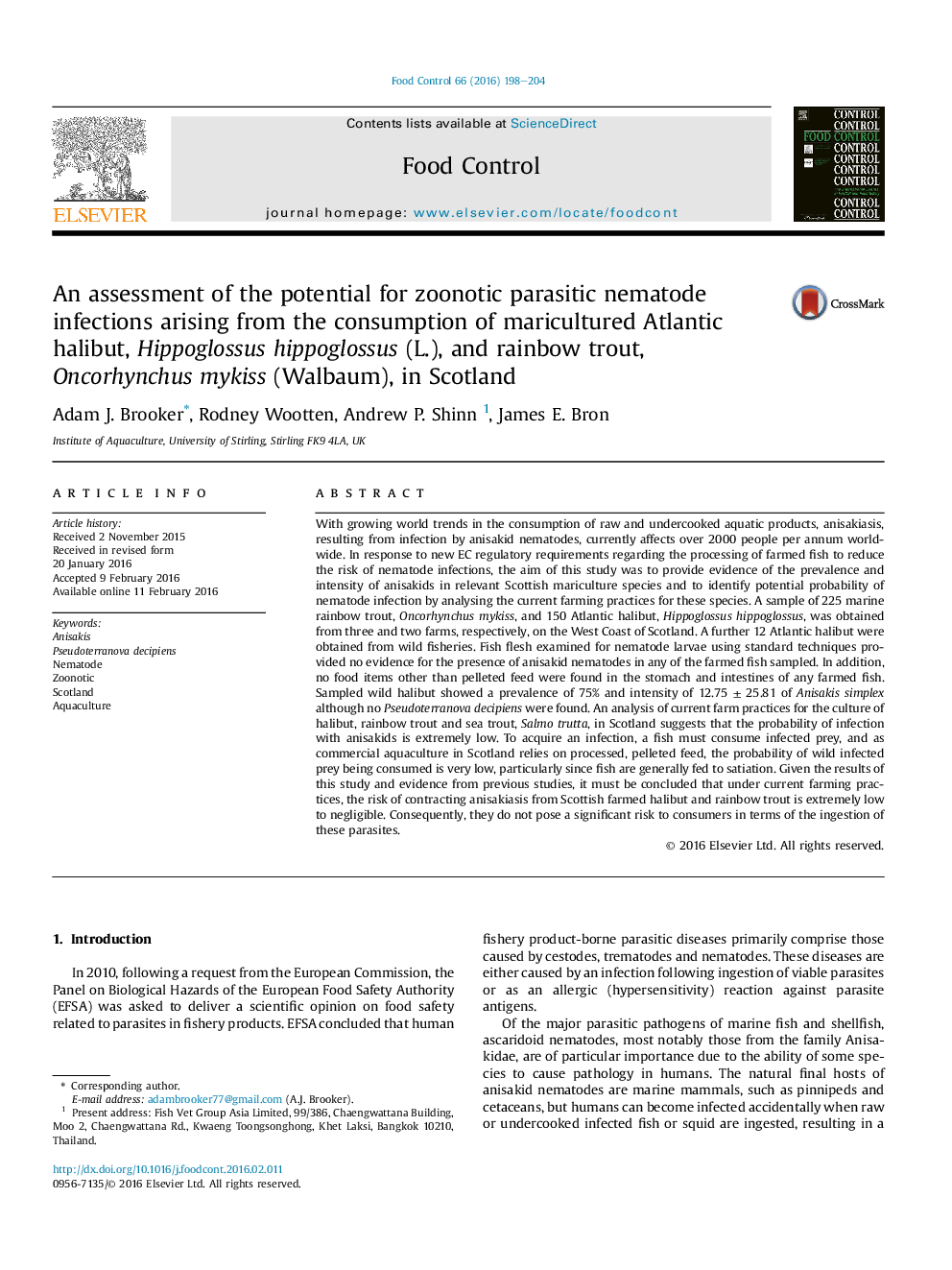| کد مقاله | کد نشریه | سال انتشار | مقاله انگلیسی | نسخه تمام متن |
|---|---|---|---|---|
| 4559192 | 1628396 | 2016 | 7 صفحه PDF | دانلود رایگان |

• Farmed Scottish halibut, rainbow trout and wild halibut were examined for nematodes.
• No anisakid nematodes were found in any of the farmed fish sampled.
• Sampled wild halibut were commonly infected with anisakids.
• Scottish farmed halibut and rainbow trout are free of anisakid nematode infections.
With growing world trends in the consumption of raw and undercooked aquatic products, anisakiasis, resulting from infection by anisakid nematodes, currently affects over 2000 people per annum worldwide. In response to new EC regulatory requirements regarding the processing of farmed fish to reduce the risk of nematode infections, the aim of this study was to provide evidence of the prevalence and intensity of anisakids in relevant Scottish mariculture species and to identify potential probability of nematode infection by analysing the current farming practices for these species. A sample of 225 marine rainbow trout, Oncorhynchus mykiss, and 150 Atlantic halibut, Hippoglossus hippoglossus, was obtained from three and two farms, respectively, on the West Coast of Scotland. A further 12 Atlantic halibut were obtained from wild fisheries. Fish flesh examined for nematode larvae using standard techniques provided no evidence for the presence of anisakid nematodes in any of the farmed fish sampled. In addition, no food items other than pelleted feed were found in the stomach and intestines of any farmed fish. Sampled wild halibut showed a prevalence of 75% and intensity of 12.75 ± 25.81 of Anisakis simplex although no Pseudoterranova decipiens were found. An analysis of current farm practices for the culture of halibut, rainbow trout and sea trout, Salmo trutta, in Scotland suggests that the probability of infection with anisakids is extremely low. To acquire an infection, a fish must consume infected prey, and as commercial aquaculture in Scotland relies on processed, pelleted feed, the probability of wild infected prey being consumed is very low, particularly since fish are generally fed to satiation. Given the results of this study and evidence from previous studies, it must be concluded that under current farming practices, the risk of contracting anisakiasis from Scottish farmed halibut and rainbow trout is extremely low to negligible. Consequently, they do not pose a significant risk to consumers in terms of the ingestion of these parasites.
Journal: Food Control - Volume 66, August 2016, Pages 198–204